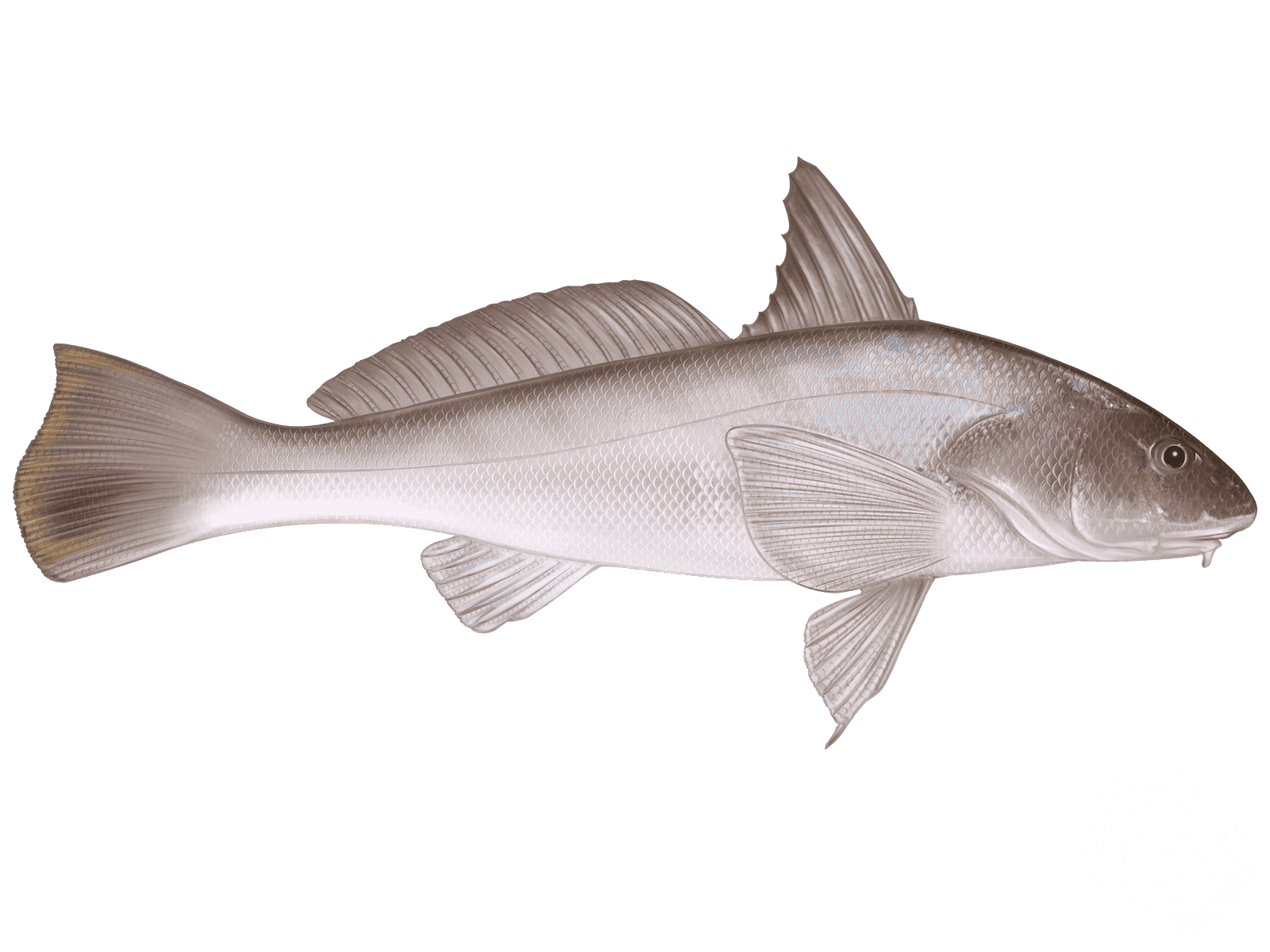Southern Kingcroaker

Species Details
Menticirrhus Americanus
Sciaenidae
Perciformes
Onshore, Rivermouth
1 - 3 lbs.
12" - 20"
Southern Kingcroaker (Menticirrhus Americanus) Description
The Southern Kingcroaker is a slender fish with two dorsal fins and one small anal fin. It has small pelvic fins also which are positioned past the anal fin, similar to that of the Milkfish. For the anterior dorsal fin (or the one in front), it has a tall spine that is accompanied by nine other spines. The posterior (or the one in the back near the tail fin) has one spine and is followed by 22 to 25 soft rays. The tailfin has a rounded edge and has no fork, making it look more spatula-shaped.
The body of the Southern Kingcroaker is a brownish bronze color with a tinge blue that reflects over the dark gold middle. Its underbelly is colored white but has some gradients of brownish bronze. The head however has a dark mustard gold color similar to that of the tailfin. The dorsal fins are a dark translucent brown color. Under some colors of light, the Southern Kingcroaker can also appear metallic pink to other cameras.
Diet and Size
The Southern Kingcroaker has an inferior-terminal lip, meaning its lips are more focused at the bottom. Because of their lip structure, Southern Kingcroakers have a preference for shrimp and crabs. But they’re also okay with eating mollusks and amphipods. Sometimes, they even scavenge for some detritus and carrion if they don’t have anything better to do.
The usual length of a Southern Kingcroaker ranges between 9-12 inches. However, there are some records that have reported Southern Kingcroakers growing up to 20 inches. For the average weight of a Southen Kingcroaker, it should reach between 1-1.5 lbs. However, the biggest one ever recorded hit around 2.4 lbs.
Interesting Facts about the Southern Kingcroaker
- Similar to the Kingcroaker, the Southern Kingcroaker makes a thrumming sound which is caused by their abdominal muscles beating against their swim bladder.
- The Southern Kingcroaker is also known to make clicking sounds with its teeth.
- Southern Kingcroakers is also known as the Southern Kingfish. This is not to be confused with the Kingfish (King Mackarel).
- The King Mackerel doesn’t have a barbel while the Southern Kingcroaker does.
- A lot of people do not know the Southern Kingcroaker by this name. Most of the time, it’s commonly called the Southern Kingfish.
- They seem to have a preference for spawning at Delaware Bay.
- Despite them being many in Delaware Bay, the Southern Kingcroaker is not eligible for an individual Delaware State Record.
- Southern Kingfish are known for their firm and mild-flavored white flesh.
- Depending on where you are, their names can change. South Carolina calls the Southern Kingfish a Whiting. In North Carolina, they are called Ground Mullets.
Fishing: How to catch a Southern Kingcroaker
A Southern Kingcroaker when it comes to lures hates artificial lures. If you’re planning to catch one of them, you’re better off getting some live bait. Some live bait that anglers recommend using to catch and hook a Southern Kingcroaker include clam, squid, and bloodworms. Usually, they would prefer them live or freshly cut if you want a better chance of pulling them out of the water. Sometimes, other anglers would use shrimp as bait.
For tackle equipment, anglers recommend using a medium-light tackle. That is if they want to make a good sport out of the Southern Kingcroaker. As for rod specs, the best kind of rod is a medium-light rod with fast action so you can immediately sense the taps of the Southern Kingcroaker. What matters here also is the kind of sinker you use. Observe the surf conditions. Those will determine if you have to use a heavier sinker or not. On good days, a 1.5-to-3-ounce sinker will do.
They usually come out more in the Spring or Summer. Some even recommend catching the Southern Kingcroaker during Spring. However, anglers still can catch Southern Kingcroakers though they’re farther into the water.
Habitat and Distribution
Southern Kingcroakers usually swim among the various troughs in the surf zone. They also have a small tendency to go into the slightly deeper parts of the water though not completely offshore. It also depends on the season. During the summer, they’re a lot closer to the beach and to the surface which makes it easier for people to spot. They also like sandy and rocky areas.
One of the things that a Southern Kingcroaker seems to like is coquina clams. Since they feed on mollusks, they’re bound to be in sandy parts that have a lot of these kinds of clams.







